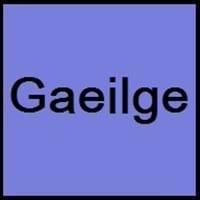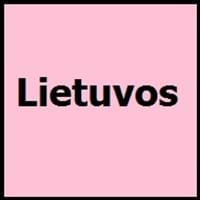Irish and Lithuanian
Countries
European Union, Ireland
European Union, Lithuania
National Language
Ireland
Lithuania
Second Language
Ireland
Not spoken in any of the countries
Speaking Continents
Europe
Europe
Minority Language
United Kingdom
Poland
Regulated By
Foras na Gaeilge
Commission of the Lithuanian Language
Interesting Facts
- In Irish language, there are no exact words for "yes" or "no".
- There are different set of numbers for counting humans and another set for counting non-humans in Irish Language.
- Lithuanian has many loanwords that originate from Slavic, Germanic and other Baltic languages.
- "Catheciusmus" is the oldest known book in Lithuanian language in 1547.
Similar To
Not Available
Latvian
Derived From
Not Available
Not Available
Alphabets in
Irish-Alphabets.jpg#200
Lithuanian-Alpahbets.jpg#200
Writing Direction
Left-To-Right, Horizontal
Left-To-Right, Horizontal
Thank You
Go raibh maith agat
Ačiū
How Are You?
Conas atá tú ?
Kaip sekasi?
Good Night
Oíche mhaith
Labanakt
Good Evening
Tráthnóna maith duit
Labas vakaras
Good Afternoon
Tráthnóna maith duit
Laba diena
Good Morning
Dia dhuit ar maidin
Labas rytas
Please
le do thoil
Prašom
Sorry
Tá brón orm
atsiprašau
I Love You
Is breá liom thú
Aš myliu tave
Excuse Me
Gabh mo leithscéal
Atsiprašau
Dialect 1
Connacht Irish
Samogitian
Where They Speak
Connacht
Lithuania
How Many People Speak
Not Available
Dialect 2
Munster Irish
Aukštaitian
Where They Speak
Munster
Lithuania
Dialect 3
Ulster Irish
Curonian
Where They Speak
Ulster
Lithuania
Speaking Population
Not Available
Not Available
Second Language Speakers
Not Available
Native Name
Gaeilge (na hÉireann) / An Ghaeilge
lietuvių kalba
Alternative Names
Erse, Gaeilge, Gaelic Irish
Lietuvi, Lietuviskai, Litauische, Litewski, Litovskiy
French Name
irlandais moyen
lituanien
German Name
Mittelirisch
Litauisch
Pronunciation
[ˈɡeːlʲɟə]
Not Available
Ethnicity
Irish people
Lithuanians
Language Family
Indo-European Family
Indo-European Family
Subgroup
Celtic
Not Available
Early Forms
Primitive Irish, Old Irish, Middle Irish, Classical Irish, Irish
No early forms
Standard Forms
An Caighdeán Oifigiúil
Lithuanian
Signed Forms
Irish Sign Language
Lithuanian Sign Language
Scope
Individual
Individual
ISO 639 6
Not Available
Not Available
Glottocode
iris1253
lith1251
Linguasphere
50-AAA
54-AAA-a
Language Type
Living
Living
Language Linguistic Typology
Verb-Subject-Object
Not Available
Language Morphological Typology
Fusional
Synthetic
All Irish and Lithuanian Dialects
Most languages have dialects where each dialect differ from other dialect with respect to grammar and vocabulary. Here you will get to know all Irish and Lithuanian dialects. Various dialects of Irish and Lithuanian language differ in their pronunciations and words. Dialects of Irish are spoken in different Irish Speaking Countries whereas Lithuanian Dialects are spoken in different Lithuanian speaking countries. Also the number of people speaking Irish vs Lithuanian Dialects varies from few thousands to many millions. Some of the Irish dialects include: Connacht Irish, Munster Irish. Lithuanian dialects include: Samogitian , Aukštaitian. Also learn about dialects in South American Languages and North American Languages.
Irish and Lithuanian Speaking population
Irish and Lithuanian speaking population is one of the factors based on which Irish and Lithuanian languages can be compared. The total count of Irish and Lithuanian Speaking population in percentage is also given. The percentage of people speaking Irish language is Not Available whereas the percentage of people speaking Lithuanian language is Not Available. When we compare the speaking population of any two languages we get to know which of two languages is more popular. Find more details about how many people speak Irish and Lithuanian on Irish vs Lithuanian where you will get native speakers, speaking population in percentage and native names.
Irish and Lithuanian Language Codes
Irish and Lithuanian language codes are used in those applications where using language names are tedious. Irish and Lithuanian Language Codes include all the international language codes, glottocodes and linguasphere.





